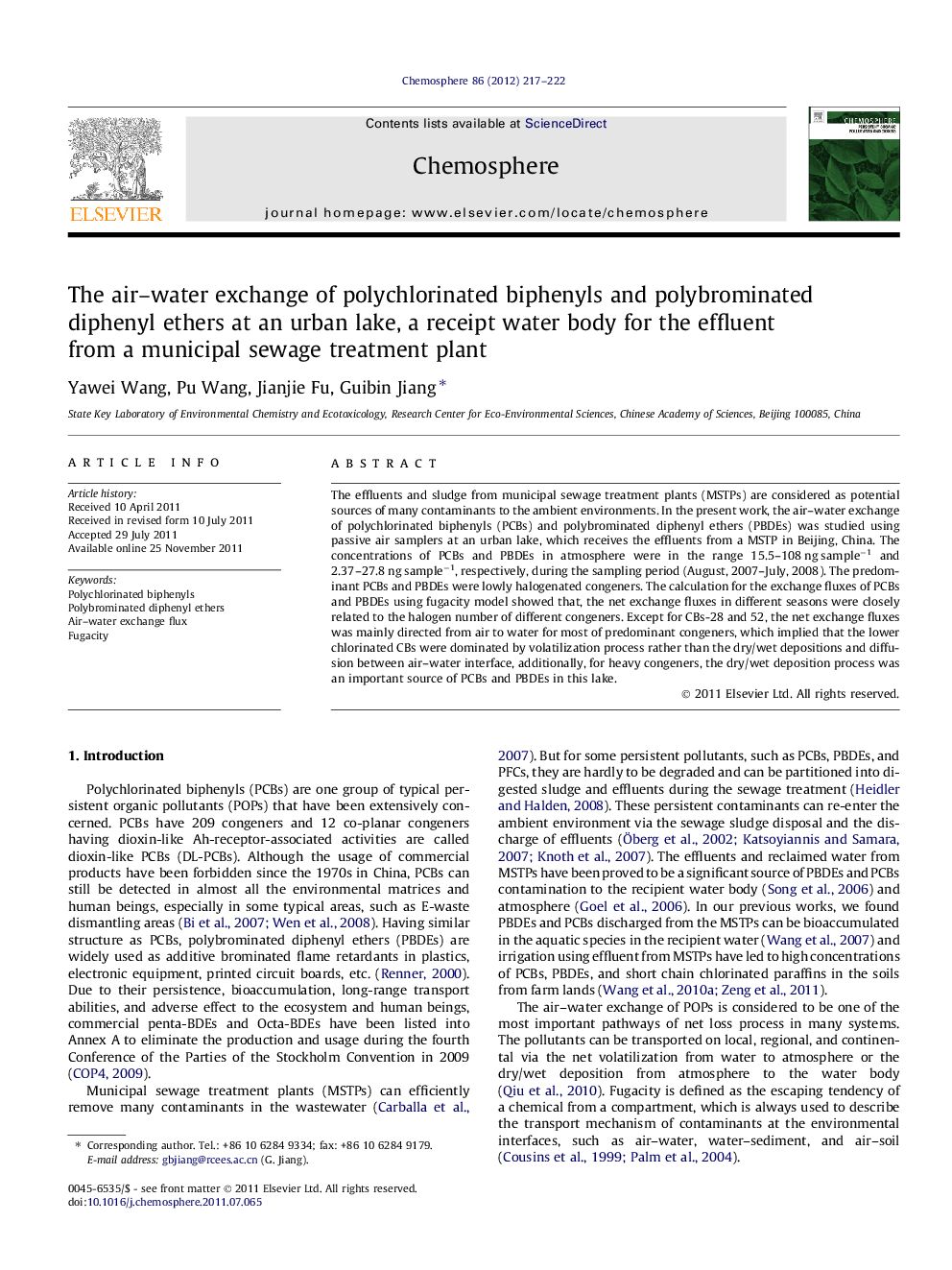| Article ID | Journal | Published Year | Pages | File Type |
|---|---|---|---|---|
| 4410001 | Chemosphere | 2012 | 6 Pages |
The effluents and sludge from municipal sewage treatment plants (MSTPs) are considered as potential sources of many contaminants to the ambient environments. In the present work, the air–water exchange of polychlorinated biphenyls (PCBs) and polybrominated diphenyl ethers (PBDEs) was studied using passive air samplers at an urban lake, which receives the effluents from a MSTP in Beijing, China. The concentrations of PCBs and PBDEs in atmosphere were in the range 15.5–108 ng sample−1 and 2.37–27.8 ng sample−1, respectively, during the sampling period (August, 2007–July, 2008). The predominant PCBs and PBDEs were lowly halogenated congeners. The calculation for the exchange fluxes of PCBs and PBDEs using fugacity model showed that, the net exchange fluxes in different seasons were closely related to the halogen number of different congeners. Except for CBs-28 and 52, the net exchange fluxes was mainly directed from air to water for most of predominant congeners, which implied that the lower chlorinated CBs were dominated by volatilization process rather than the dry/wet depositions and diffusion between air–water interface, additionally, for heavy congeners, the dry/wet deposition process was an important source of PCBs and PBDEs in this lake.
► The net exchange fluxes of PCBs and PBDEs are closely related to the halogen number of congeners. ► The exchange flux of lower chlorinated CBs is dominated by volatilization process. ► The deposition process of heavy congeners of PCBs and PBDEs was an important source to this lake.
